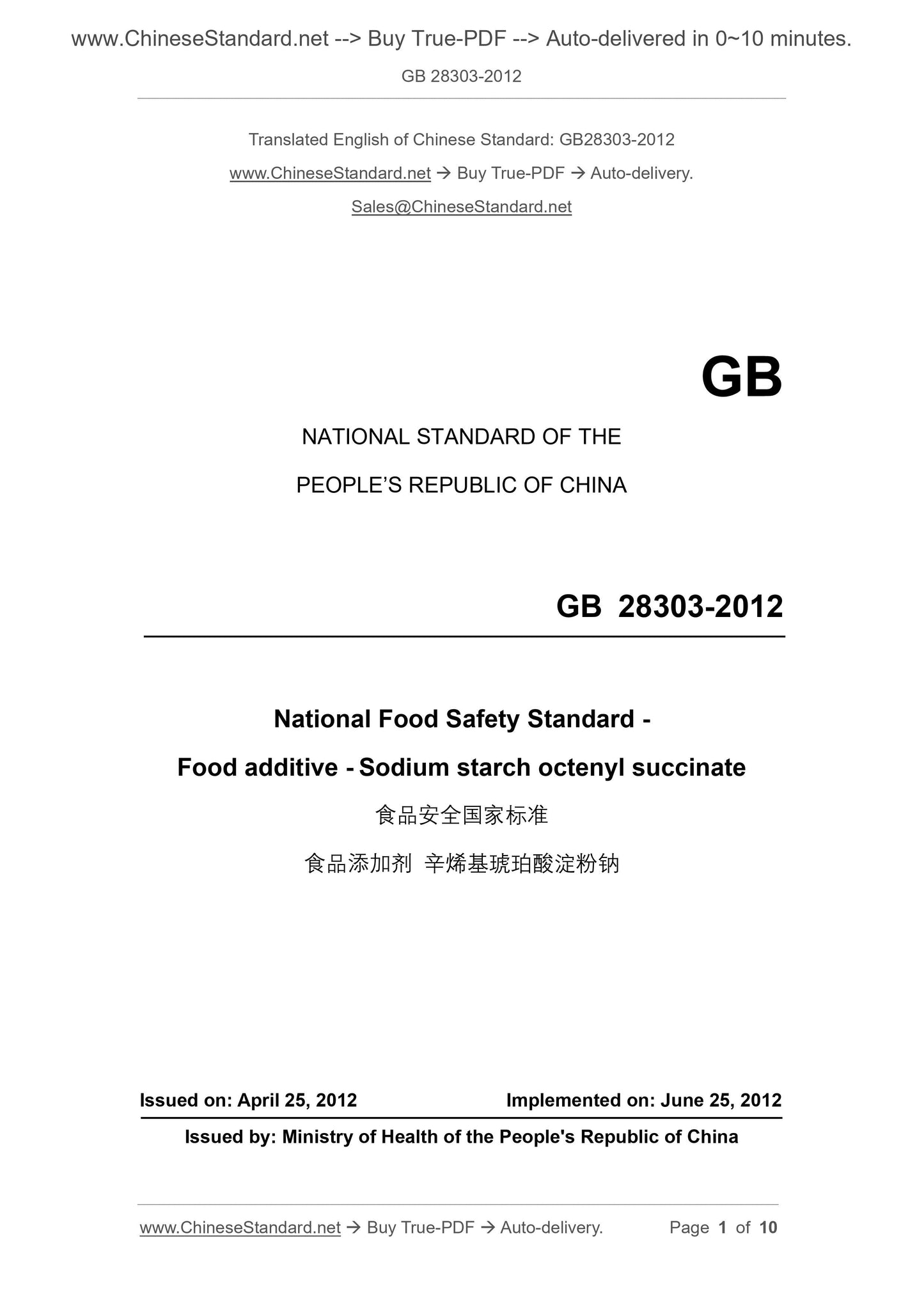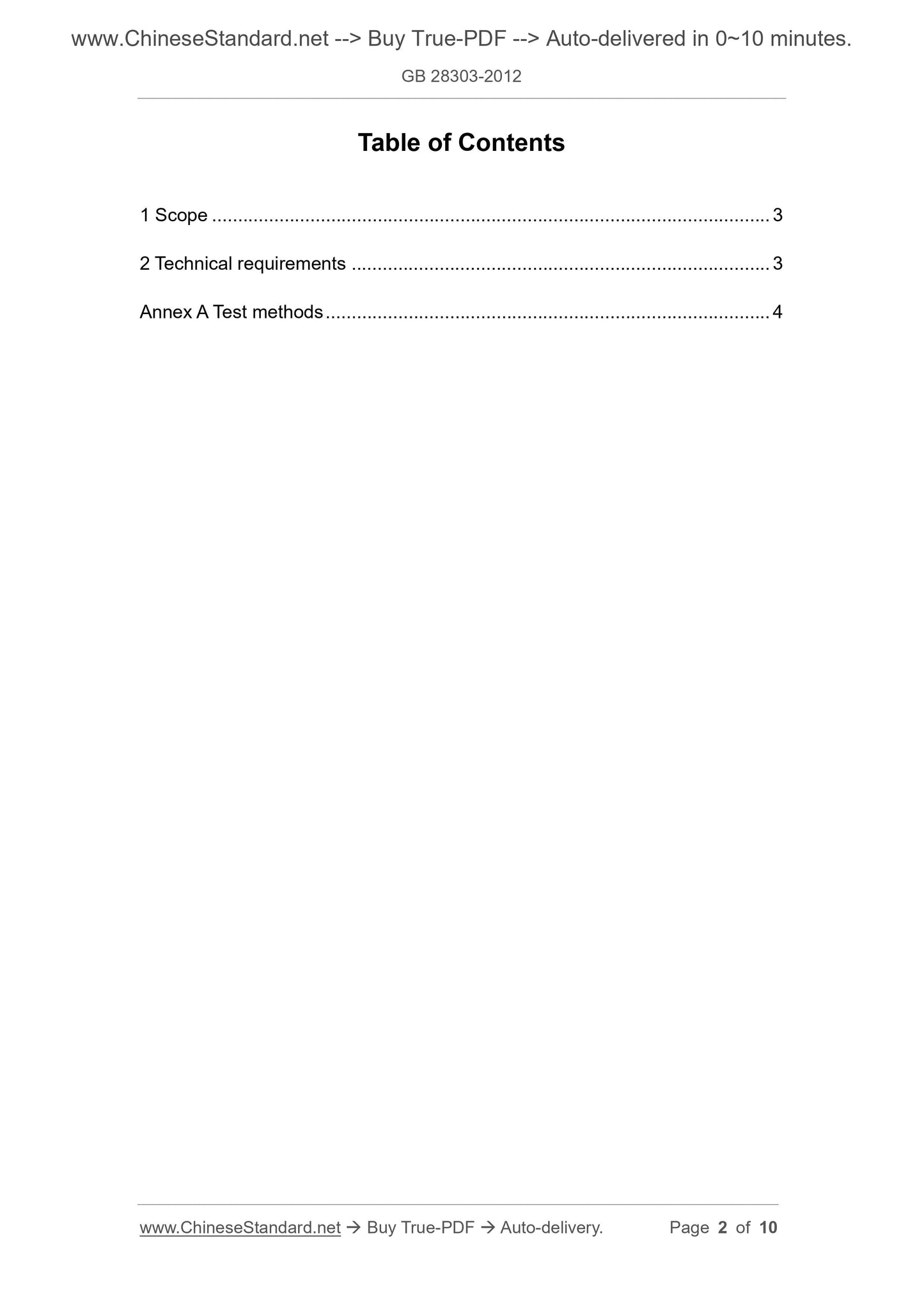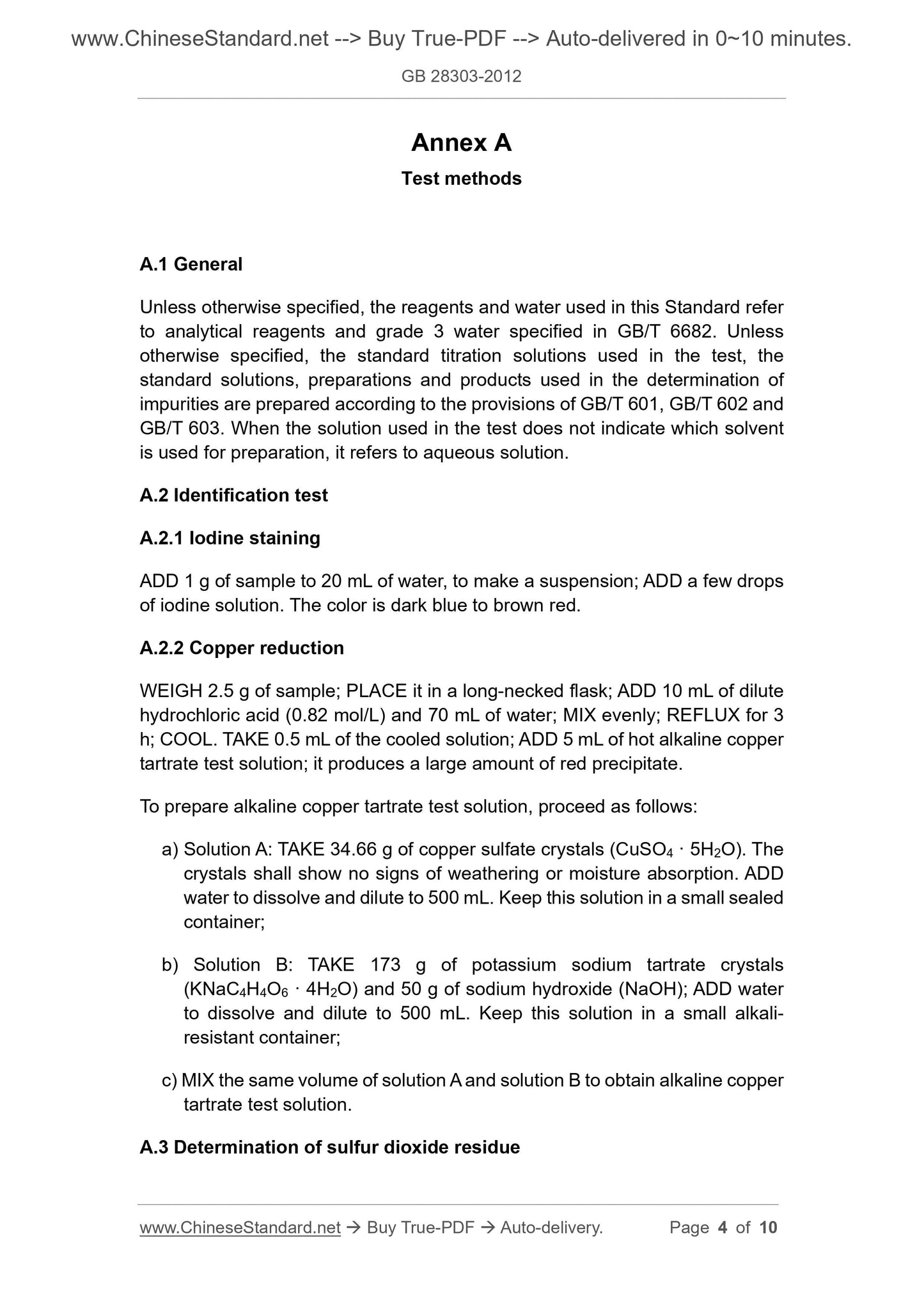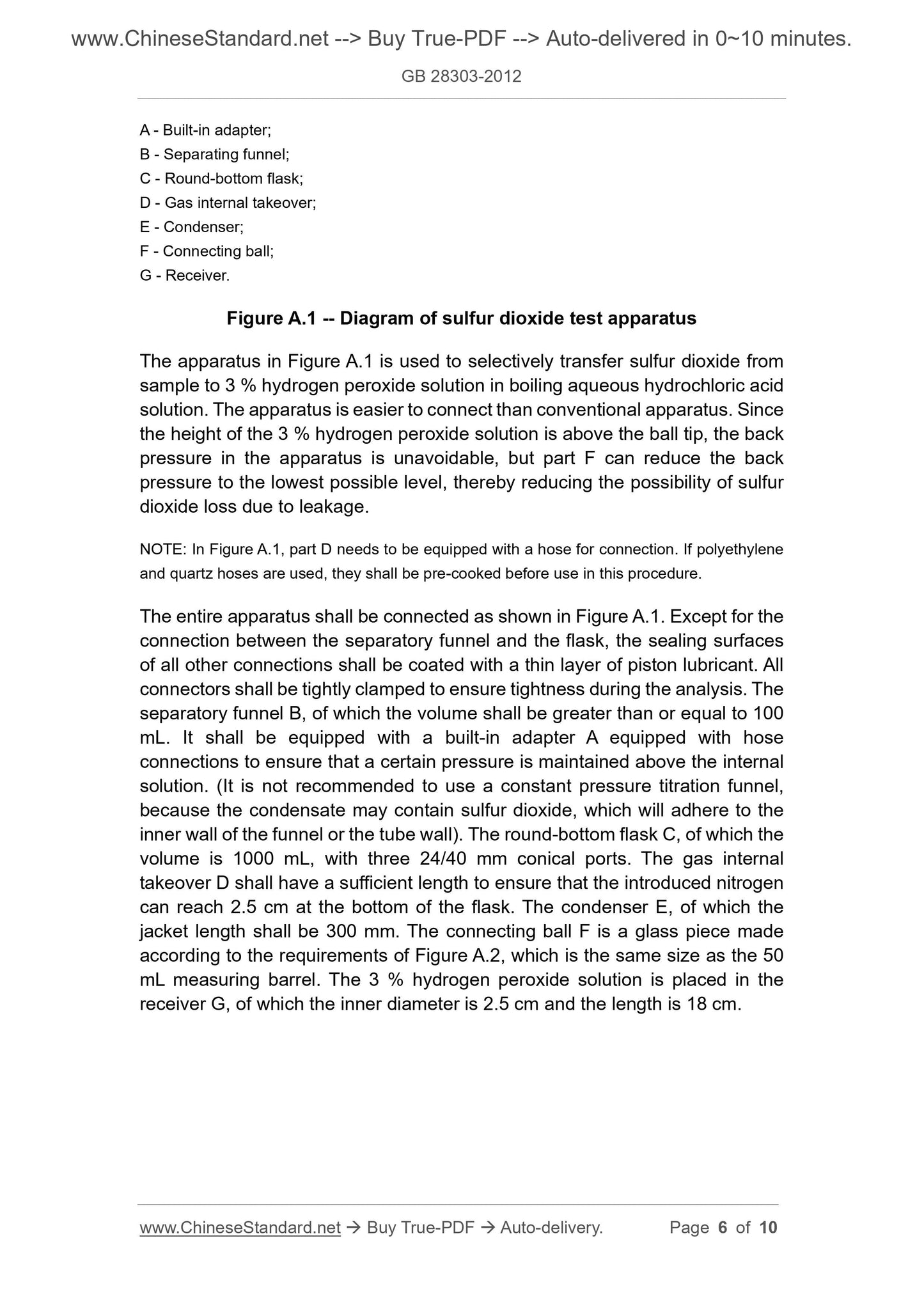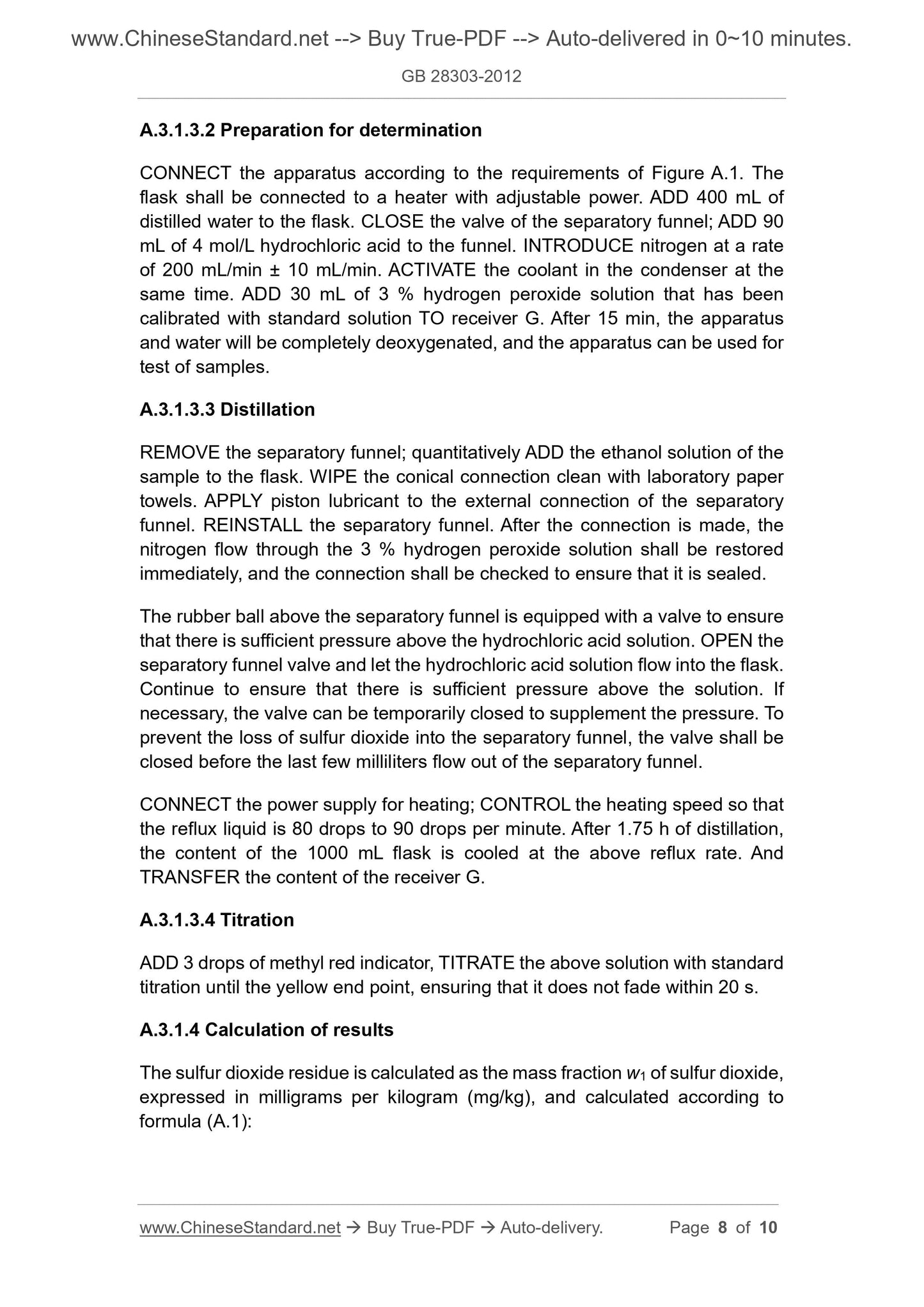1
/
of
5
www.ChineseStandard.us -- Field Test Asia Pte. Ltd.
GB 28303-2012 English PDF
GB 28303-2012 English PDF
Regular price
$70.00
Regular price
Sale price
$70.00
Unit price
/
per
Shipping calculated at checkout.
Couldn't load pickup availability
GB 28303-2012: Food additives -- Octenyl succinate starch sodium
Delivery: 9 seconds. Download (and Email) true-PDF + Invoice.Get Quotation: Click GB 28303-2012 (Self-service in 1-minute)
Newer / historical versions: GB 28303-2012
Preview True-PDF
Basic Data
| Standard ID | GB 28303-2012 (GB28303-2012) |
| Description (Translated English) | Food additives -- Octenyl succinate starch sodium |
| Sector / Industry | National Standard |
| Classification of Chinese Standard | C54;X40 |
| Classification of International Standard | 67.220.20 |
| Word Count Estimation | 8,880 |
| Regulation (derived from) | Ministry of Health Bulletin 2012 No. 7 |
| Issuing agency(ies) | Ministry of Health of the People's Republic of China |
| Summary | This Chinese standard applies to starch octenyl succinic anhydride esterification, and may after the enzyme treatment, dextrinization, acid treatment, bleached cooking derived food additives or pre- gelatinized starch sodium octenylsuccinate. |
Share
